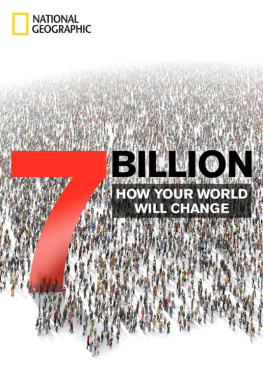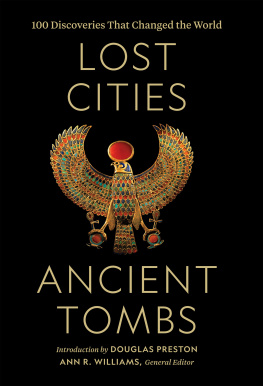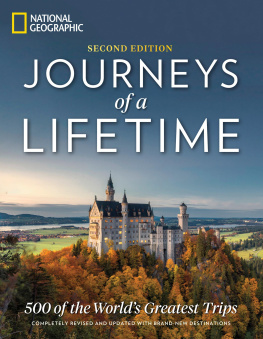National Geographic - 7 Billion: How Your World Will Change
Here you can read online National Geographic - 7 Billion: How Your World Will Change full text of the book (entire story) in english for free. Download pdf and epub, get meaning, cover and reviews about this ebook. year: 2011, publisher: National Geographic Society, genre: Romance novel. Description of the work, (preface) as well as reviews are available. Best literature library LitArk.com created for fans of good reading and offers a wide selection of genres:
Romance novel
Science fiction
Adventure
Detective
Science
History
Home and family
Prose
Art
Politics
Computer
Non-fiction
Religion
Business
Children
Humor
Choose a favorite category and find really read worthwhile books. Enjoy immersion in the world of imagination, feel the emotions of the characters or learn something new for yourself, make an fascinating discovery.
- Book:7 Billion: How Your World Will Change
- Author:
- Publisher:National Geographic Society
- Genre:
- Year:2011
- Rating:4 / 5
- Favourites:Add to favourites
- Your mark:
- 80
- 1
- 2
- 3
- 4
- 5
7 Billion: How Your World Will Change: summary, description and annotation
We offer to read an annotation, description, summary or preface (depends on what the author of the book "7 Billion: How Your World Will Change" wrote himself). If you haven't found the necessary information about the book — write in the comments, we will try to find it.
National Geographic: author's other books
Who wrote 7 Billion: How Your World Will Change? Find out the surname, the name of the author of the book and a list of all author's works by series.
7 Billion: How Your World Will Change — read online for free the complete book (whole text) full work
Below is the text of the book, divided by pages. System saving the place of the last page read, allows you to conveniently read the book "7 Billion: How Your World Will Change" online for free, without having to search again every time where you left off. Put a bookmark, and you can go to the page where you finished reading at any time.
Font size:
Interval:
Bookmark:
Robert Kunzig is National Geographics senior editor for the environment.
One day in Delft in the fall of 1677, Antoni van Leeuwenhoek, a cloth merchant who is said to have been the long-haired model for two paintings by Johannes VermeerThe Astronomer and The Geographerabruptly stopped what he was doing with his wife and rushed to his worktable. Cloth was Leeuwenhoeks business but microscopy his passion. Hed had five children already by his first wife (though four had died in infancy), and fatherhood was not on his mind. Before six beats of the pulse had intervened, as he later wrote to the Royal Society of London, Leeuwenhoek was examining his perishable sample through a tiny magnifying glass. Its lens, no bigger than a small raindrop, magnified objects hundreds of times. Leeuwenhoek had made it himself; nobody else had one so powerful. The learned men in London were still trying to verify Leeuwenhoeks earlier claims that unseen animalcules lived by the millions in a single drop of lake water and even in French wine. Now he had something more delicate to report: Human semen contained animalcules too. Sometimes more than a thousand, he wrote, in an amount of material the size of a grain of sand. Pressing the glass to his eye like a jeweler, Leeuwenhoek watched his own animalcules swim about, lashing their long tails. One imagines sunlight falling through leaded windows on a face lost in contemplation, as in the Vermeers. One feels for his wife.
Leeuwenhoek became a bit obsessed after that. Though his tiny peephole gave him privileged access to a never-before-seen microscopic universe, he spent an enormous amount of time looking at spermatozoa, as theyre now called. Oddly enough, it was the milt he squeezed from a cod one day that inspired him to estimate, almost casually, just how many people might live on Earth.
Nobody then really had any idea; there were few censuses. Leeuwenhoek started with an estimate that around a million people lived in Holland. Using maps and a little spherical geometry, he calculated that the inhabited land area of the planet was 13,385 times as large as Holland. It was hard to imagine the whole planet being as densely peopled as Holland, which seemed crowded even then. Thus, Leeuwenhoek concluded triumphantly, there couldnt be more than 13.385 billion people on Eartha small number indeed compared with the 150 billion sperm cells of a single codfish! This cheerful little calculation, writes population biologist Joel Cohen in his book How Many People Can the Earth Support?, may have been the first attempt to give a quantitative answer to a question that has become far more pressing now than it was in the 17th century. Most answers these days are far from cheerful.
Historians now estimate that in Leeuwenhoeks day there were only half a billion or so humans on Earth. After rising very slowly for millennia, the number was just starting to take off. A century and a half later, when another scientist reported the discovery of human egg cells, the worlds population had doubled to more than a billion. A century after that, around 1930, it had doubled again to two billion. The acceleration since then has been astounding. Before the 20th century, no human had lived through a doubling of the human population, but there are people alive today who have seen it triple. Sometime in late 2011, according to the UN Population Division, there will be seven billion of us.
And the explosion, though it is slowing, is far from over. Not only are people living longer, but so many women across the world are now in their children than she would have had a generation ago. By 2050 the total number could reach 10.5 billion, or it could stop at eight billionthe difference is about one child per woman. UN demographers consider the middle road their best estimate: They now project that the population may reach nine billion before 2050in 2045. The eventual tally will depend on the choices individual couples make when they engage in that most intimate of human acts, the one Leeuwenhoek interrupted so carelessly for the sake of science.
With the population still growing by about 80 million each year, its hard not to be alarmed. Right now on Earth, water tables are falling, soil is eroding, glaciers are melting, and fish stocks are vanishing. Close to a billion people go hungry each day. Decades from now, there will likely be two billion more mouths to feed, mostly in poor countries. There will be billions more people wanting and deserving to boost themselves out of poverty. If they follow the path blazed by wealthy countriesclearing forests, burning coal and oil, freely scattering fertilizers and pesticidesthey too will be stepping hard on the planets natural resources. How exactly is this going to work?
THERE MAY BE SOME COMFORT in knowing that people have long been alarmed about population. From the beginning, says French demographer Herv Le Bras, demography has been steeped in talk of the apocalypse. Some of the fields founding papers were written just a few years after Leeuwenhoeks discovery by Sir William Petty, a founder of the Royal Society. He estimated that world population would double six times by the Last Judgment, which was expected in about 2,000 years. At that point it would exceed 20 billion peoplemore, Petty thought, than the planet could feed. And then, according to the prediction of the Scriptures, there must be wars, and great slaughter, &c., he wrote.
As religious forecasts of the worlds end receded, Le Bras argues, population growth itself provided an ersatz mechanism of apocalypse. It crystallized the ancient fear, and perhaps the ancient hope, of the end of days, he writes. In 1798 Thomas Malthus, an English priest and economist, enunciated his general law of population: that it necessarily grows faster than the food supply, until war, disease, and famine arrive to reduce the number of people. As it turned out, the last plagues great enough to put a dent in global population had already happened when Malthus wrote. World population hasnt fallen, historians think, since the Black Death of the 14th century.
In the two centuries after Malthus declared that population couldnt continue to soar, thats exactly what it did. The process started in what we now call the developed countries, which were then still developing. The spread of New World crops like corn and the potato, along with the discovery of chemical fertilizers, helped banish starvation in Europe. Growing cities remained cesspools of disease at first, but from the mid-19th century on, sewers began to channel human waste away from drinking water, which was then filtered and chlorinated; that dramatically reduced the spread of cholera and typhus.
Moreover in 1798, the same year that Malthus published his dyspeptic tract, his compatriot Edward Jenner described a vaccine for smallpoxthe first and most important in a series of vaccines and antibiotics that, along with better nutrition and sanitation, would double life expectancy in the industrializing countries, from 35 years to 77 today. It would take a cranky person to see that trend as gloomy: The development of medical science was the straw that broke the camels back, wrote Stanford population biologist Paul Ehrlich in 1968.
Ehrlichs book, The Population Bomb, made him the most famous of modern Malthusians. In the 1970s, Ehrlich predicted, hundreds of millions of people are going to starve to death, and it was too late to do anything about it. The cancer of population growthmust be cut out, Ehrlich wrote, by compulsion if voluntary methods fail. The very future of the United States was at risk. In spite or perhaps because of such language, the book was a best seller, as Malthuss had been. And this time too the bomb proved a dud. The green revolutiona combination of high-yield seeds, irrigation, pesticides, and fertilizers that enabled grain production to doublewas already under way. Today many people are undernourished, but mass starvation is rare.
Font size:
Interval:
Bookmark:
Similar books «7 Billion: How Your World Will Change»
Look at similar books to 7 Billion: How Your World Will Change. We have selected literature similar in name and meaning in the hope of providing readers with more options to find new, interesting, not yet read works.
Discussion, reviews of the book 7 Billion: How Your World Will Change and just readers' own opinions. Leave your comments, write what you think about the work, its meaning or the main characters. Specify what exactly you liked and what you didn't like, and why you think so.









